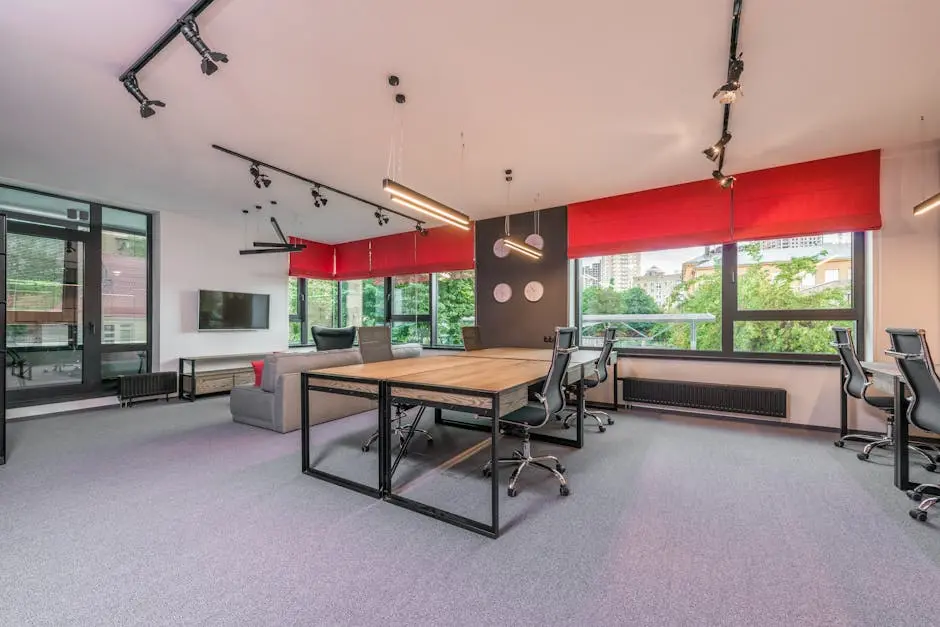In today’s fast-paced world, where many of us find ourselves tethered to our desks for hours on end, prioritizing our ergonomic health has never been more crucial. One often overlooked piece of furniture that can make a significant difference is the adjustable table. Not only do these tables provide versatility, but they also promote better posture, reduce discomfort, and support our overall well-being. In this post, we’ll explore the myriad benefits of adjustable tables and why they are essential for anyone looking to enhance their workspace ergonomically.
Understanding Ergonomics and Its Importance
Ergonomics is the science of designing a workspace that fits the user’s needs. It plays a vital role in preventing discomfort and injuries while enhancing productivity. In this section, we will delve into why ergonomics matters and the potential health risks associated with poor workspace design.
When we talk about ergonomics, it’s not just about comfort; it’s about creating an optimal environment that allows you to work efficiently. Poor ergonomics can lead to a myriad of health issues, including repetitive strain injuries, eye strain, and even chronic pain. So, understanding the principles of ergonomics is the first step toward creating a healthier workspace.
Incorporating ergonomic practices can profoundly impact your daily life. Imagine being able to work for hours without fatigue or discomfort. That’s the power of an ergonomic workspace, and it begins with understanding how our bodies interact with the tools we use.
What an Adjustable Table Is and How It Works
Adjustable tables come with features that allow users to modify the height of the surface seamlessly. This flexibility enables users to switch between sitting and standing positions throughout the day. Here, we will take a closer look at the mechanics behind adjustable tables and the various styles available.
Essentially, adjustable tables are designed to accommodate the varying heights of users, which can make a substantial difference in terms of maintaining proper posture. With the simple press of a button or a quick manual adjustment, you can tailor the desk to your preferred height, making working either seated or standing an easy transition.
From pneumatic lifts to electric motors, the technology behind adjustable tables varies widely. These innovations not only allow greater customization but also cater to different work styles, whether you’re writing, typing, or attending virtual meetings.
Benefits of Using an Adjustable Table
From reducing back pain to improving circulation, adjustable tables offer a range of health benefits. This section will highlight the key advantages of incorporating such tables into your workspace, including boosting energy levels and enhancing focus.
One of the standout benefits of using an adjustable table is its ability to combat the negative effects of prolonged sitting. Studies have shown that standing while working can significantly reduce the risk of weight gain and obesity. Additionally, alternating between sitting and standing helps improve focus and productivity, which can lead to better work outcomes.
Moreover, the ergonomic design of adjustable tables promotes better posture. By enabling users to find their ideal height, these tables can alleviate undue stress on the spine and neck. Forget about slouching! With an adjustable table, you’re more likely to maintain a natural alignment, which is essential for overall health.
Tips for Transitioning to an Adjustable Table
Making the switch to an adjustable table can feel daunting at first. Here, we’ll provide practical tips to help you transition smoothly, such as choosing the right height settings and integrating standing work into your daily routine.
Start slow. If you’re accustomed to sitting all day, try standing for just 15 minutes every hour. Gradually increase that time as you become more comfortable. It’s important to listen to your body and find a balance that works for you.
Additionally, consider your workspace layout. Ensure that your computer monitor is at eye level to prevent strain. The keyboard should be positioned so that your elbows remain at a 90-degree angle while typing. These small adjustments can make a big difference in your comfort levels.
Real Life Experiences: Users Share Their Stories
In this section, we will share testimonials from real users who have experienced a transformation in their ergonomic health after switching to adjustable tables. Their stories will offer inspiration and insights into the practical impact of these tables on everyday life.
One user recounts how their chronic back pain significantly reduced after they made the switch to an adjustable table. The ability to easily alternate between sitting and standing not only alleviated their discomfort but also made them feel more energized throughout the workday.
Another user shared their experience of improved focus and productivity. They noted that standing while working led them to feel more alert and engaged, allowing them to complete tasks more efficiently. Hearing these personal accounts helps highlight the real-world benefits of adopting an adjustable table.
The Final Word on Adjustable Tables
Investing in an adjustable table is an investment in your health. By allowing you to easily alternate between sitting and standing, it helps to combat the negative effects of prolonged sitting, increases productivity, and enhances your overall comfort while working. As we become more aware of the importance of ergonomic practices in our daily lives, adjustable tables stand out as a simple yet effective solution. So, if you’re looking to upgrade your workspace for better health and wellness, consider making the switch to an adjustable table. Your body will thank you!













